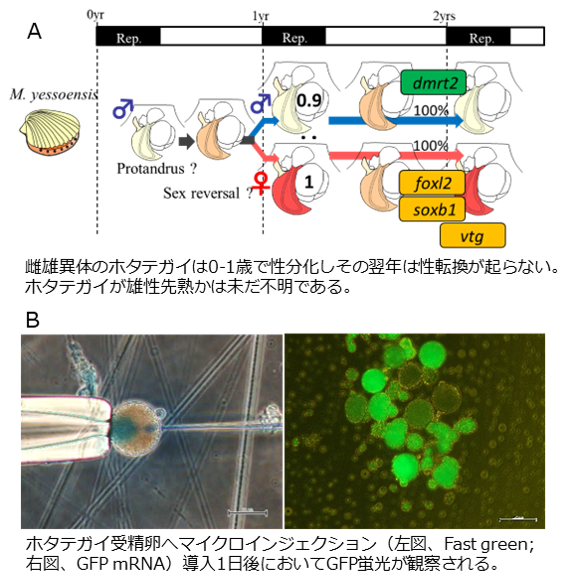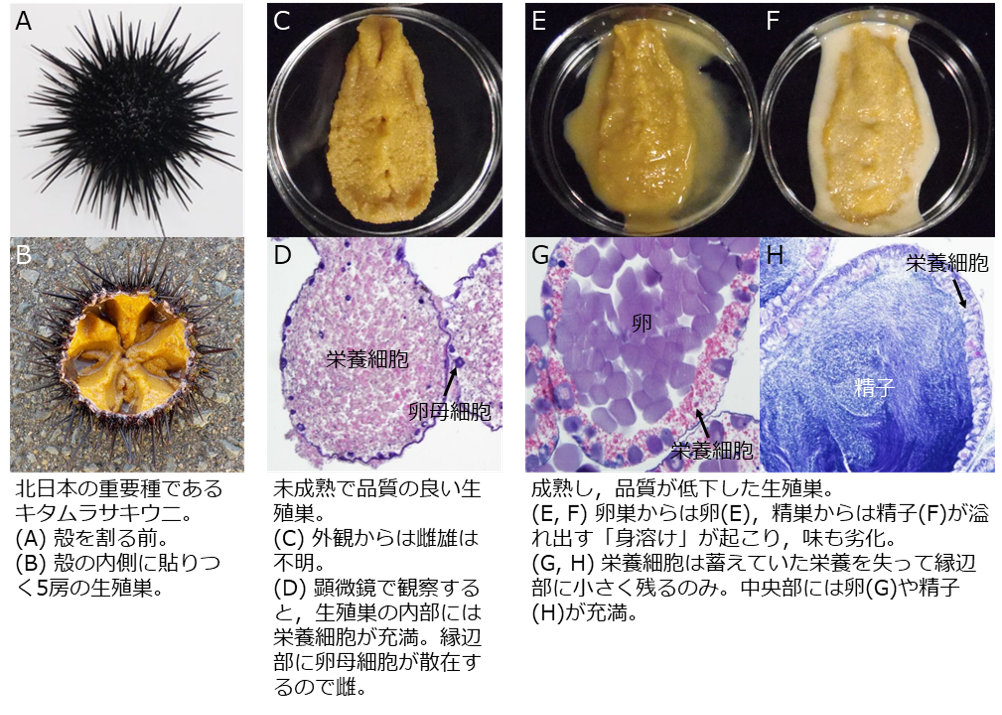Marine Biosciences Course
Aquaculture Biology
Introduction
Our mission is to elucidate the reproductive mechanisms of marine invertebrates, which have high industrial value among aquatic animals, at the tissue, cellular, and molecular levels, and to apply these to the development of advanced aquaculture technologies. Our research focuses on bivalves (such as the Yesso scallop and Pacific oyster) and sea urchins (such as the Northern sea urchin and the short-spined sea urchin), which have large catches and aquaculture production in northern Japan.
(1) Research on the reproductive engineering of bivalves
About 1,000 species of bivalve mollusks are known to exist in Japan, and many of them are useful organisms that are essential to the fishing industry. These bivalves include both hermaphroditic and hermaphroditic species, and sexual phenotypes have evolved in various ways. However, the molecular mechanisms of sex determination, sex differentiation, and sex change have not been fully elucidated in either species, and there is a lack of basic physiological knowledge for the development of sex control techniques in aquaculture. Therefore, our laboratory is developing reproductive technologies for bivalve mollusks using gene transfer and genome editing to elucidate the gene functions involved in the reproductive mechanisms of bivalve mollusks.
(2) Research on the maturation control of sea urchins
The edible part of sea urchin is the gonad (ovary in females and testis in males). Sea urchins store the nutrients necessary for gametogenesis in nutritive phagocytes in the gonads in advance, and use these nutrients to mature when the spawning season approaches. The immature gonads that have accumulated sufficient nutrients in the nutritive phagocytes are preferred as food. As gametogenesis proceeds, food quality of the gonads is reduced because of the melting appearance caused by the flow of gametes from the gonads and deterioration of taste. In sea urchin aquaculture, it is possible to avoid quality loss and extend the harvest season by controlling maturation. It has been shown that sea urchin gametogenesis is affected by the photoperiod (the light-dark cycle of day and night), and that if the photoperiod is appropriately manipulated, maturation can be suppressed and gonad quality can be maintained over a longer period of time. Currently, we are investigating the effects of light conditions on sea urchin gametogenesis in detail to find conditions under which maturation can be suppressed more efficiently and to develop a low-cost, highly practical aquaculture method.


URL
https://sites.google.com/view/suikenseiri
Keywords
Bivalves, Sea urchin, Reproduction, Sex determination, Sex differentiation, Gametogenesis, Gene transfer, Genome editing, Maturation control



